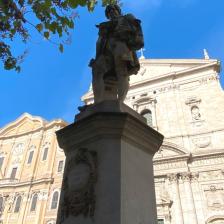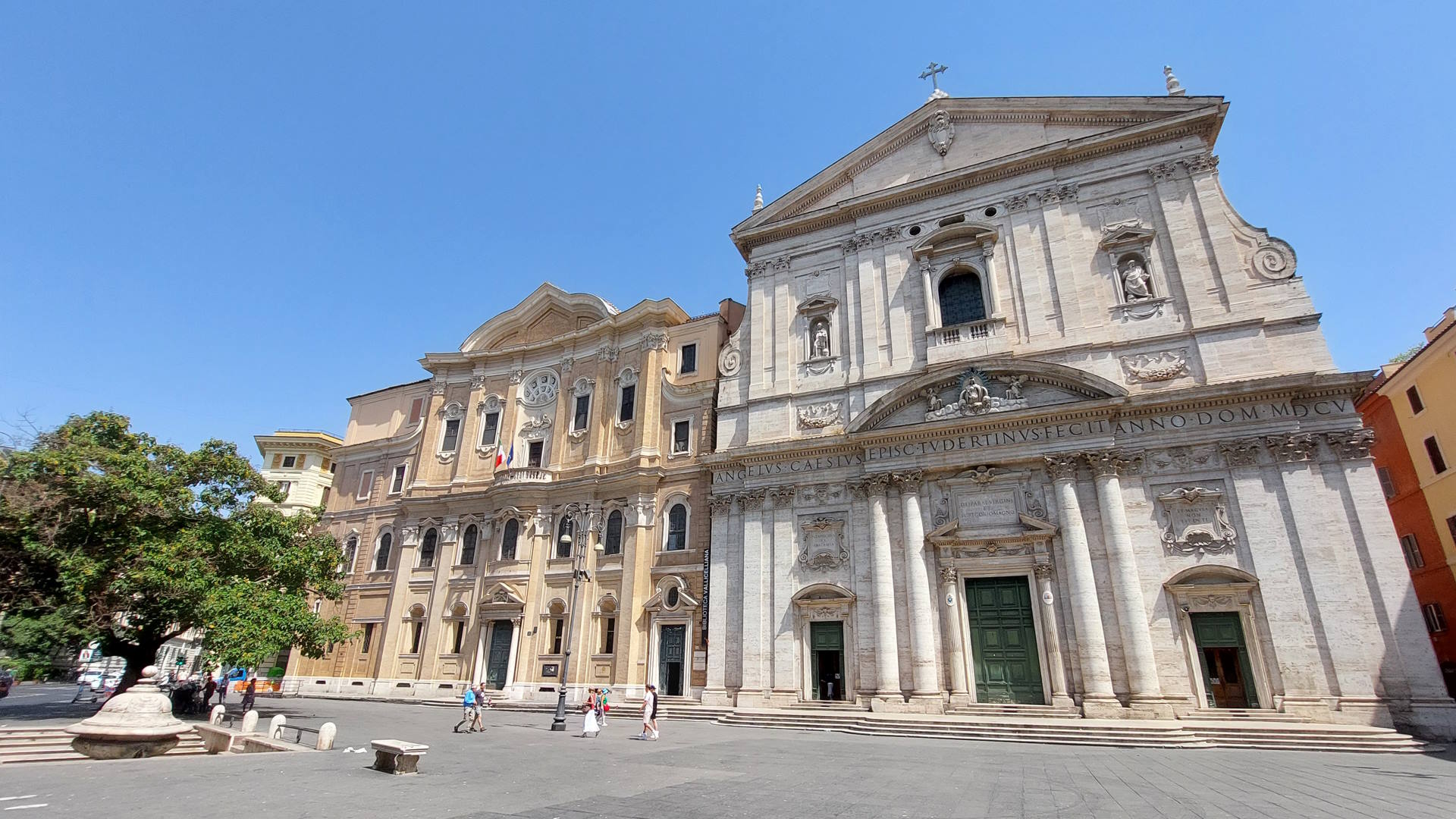
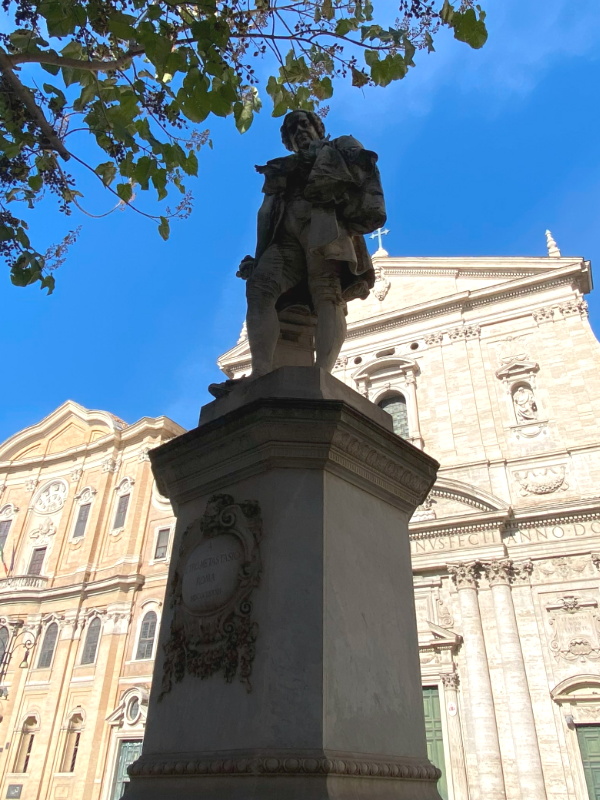
En el corazón del Barroco
Situada en el Rione Parione, la plaza de la Chiesa Nuova se encuentra junto a Corso Vittorio Emanuele II, la animada arteria que va desde la Piazza del Gesù hasta la Piazza Pasquale Paoli, a la altura del Tíber. A un lado de la plaza, a la sombra de un árbol, sobre un alto pedestal se encuentra la estatua de mármol de finales del siglo XIX dedicada a Pietro Trapassi, conocido como Metastasio, el gran poeta y libretista nacido en la cercana Via dei Cappellari. A pocos pasos de extraordinarios tesoros barrocos - Piazza Navona, la Fuente de los Cuatro Ríos, la Fuente del Moro, el Palacio Pamphilj, Sant'Andrea della Valle - la plaza toma su nombre de la iglesia del mismo nombre del siglo XVI, oficialmente llamada Santa Maria in Vallicella. Refinado y simétrico, el edificio religioso alberga preciosas obras de Pietro da Cortona y Rubens y alberga la Capilla de San Filippo Neri, donde reposa el "Pippo bbono", como lo llamaban cariñosamente los romanos, y las evocadoras habitaciones del santo, con algunas de sus reliquias y recuerdos y pinturas de Guercino y Guido Reni.
Geometrías, curvas y juegos de perspectiva: la maestría de Borromini
En la plaza, junto a la Iglesia de Santa María en Vallicella, se encuentra el espléndido Oratorio dei Filippini, una obra maestra de Francesco Borromini, creada por el artista después de ganar un concurso convocado por los Padres Filippini en la primavera de 1637. Un verdadero icono del barroco romano: la fachada ondulada original, entre líneas cóncavas y convexas, se caracteriza por elegantes decoraciones, ventanas altas enmarcadas por tímpanos - triangulares para el primer orden y curvadas para el segundo - y un frontón curvilíneo que corona el imponente edificio, que crea dinamismo y efectos de claroscuro. El interior alberga la prestigiosa y antigua Biblioteca Vallicelliana, conocida como Sala Borromini, que, bajo un espléndido techo artesonado de madera, alberga en sus preciosas estanterías más de 130.000 volúmenes repartidos entre manuscritos, incunables, libros impresos, códigos raros, fotografías y música.
Una "sopera" de artista
“Ama a Dios y no desfallezcas, haz el bien y que se diga. MDCXXII", es la inscripción que se puede leer en la curiosa fuente que, situada en la Piazza della Chiesa Nuova, es una de las más curiosas y poco conocidas de Roma. Creada por el arquitecto y escultor Giacomo Della Porta, autor también de las cercanas Fontana del Moro y Fontana del Nettuno en Piazza Navona, la singular obra, decorada en los bordes con cuatro delfines de bronce de cuyas bocas manaba el agua del acueducto Vergine, fue colocada en Campo de' Fiori en 1595, pero pronto se convirtió en una especie de tina para conservar frescas y lavar las frutas y verduras del pintoresco mercado de la plaza. En 1622, la administración de la ciudad decidió poner remedio a esta costumbre quitando los delfines y encargando a un artista desconocido, también autor de la inscripción, una gran tapa de travertino que provocó la proverbial ironía de los romanos: la fuente pasó a llamarse "Pasticcio" y luego "Terrina" debido a su parecido con una gran sopera. Desmantelado en 1889 y olvidado durante 35 años en un almacén, en 1924 fue recuperado y trasladado a su ubicación actual, donde sigue intrigando a transeúntes y turistas con su inusual apariencia.
Foto: Redación de Turismo Roma
Iglesia de Santa Maria in Vallicella (Iglesia Nueva) y estancias de San Filippo Neri
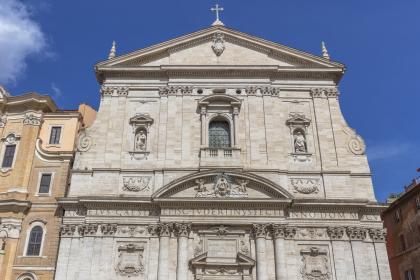
 Condividi
Condividi
Biblioteca Vallicelliana
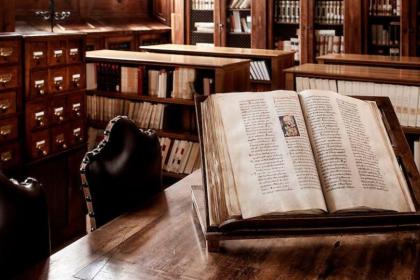
 Condividi
Condividi
Fuente de la Terrina
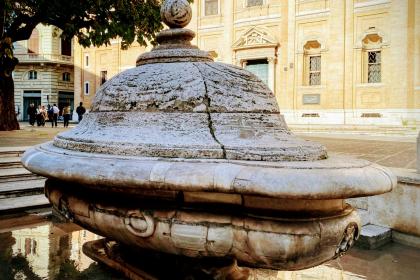
 Condividi
Condividi
Palacio de los Filippini (Convento y Oratorio de los Filippini)
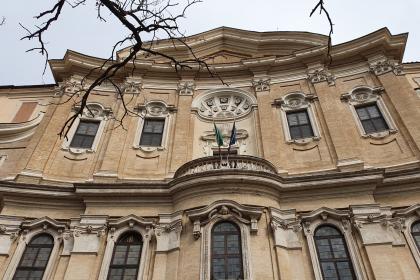
 Condividi
Condividi
Piazza Navona
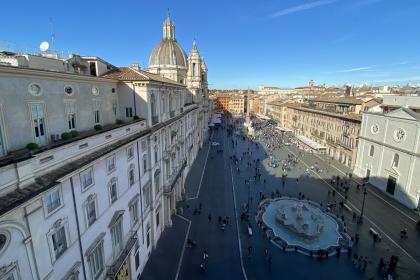
 Condividi
Condividi
Uno de los complejos urbanísticos más espectaculares de la Roma barroca
Basílica de Sant'Andrea della Valle
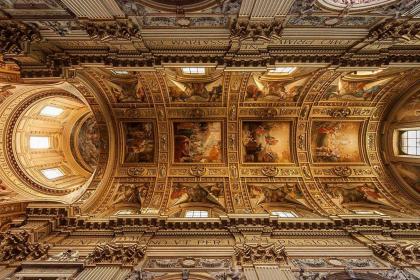
 Condividi
Condividi
Los lugares de Borromini
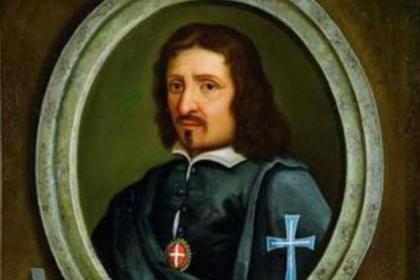
The masters of art - Roman itineraries in the footsteps of the great artists
 Condividi
Condividi
Informaciones
 Condividi
Condividi
Location
Para conocer todos los servicios de accesibilidad, visite la sección Roma accesible.












































